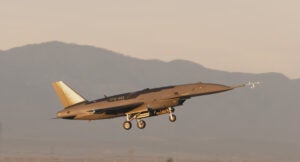
The Defense Department needs to regain dominance, or at least parity, in the electromagnetic spectrum or else high-end platforms like ships and aircraft will be impacted, according to a top official. Alan Shaffer, principal deputy, assistant secretary of defense for research and engineering, said Wednesday as society and technology transitioned from analog to digital electronics, the United States largely stayed stagnant. “The U.S. (has) stayed largely…in our standard radar and communication bands,” Shaffer said Wednesday at the ComDef 2014 conference…










